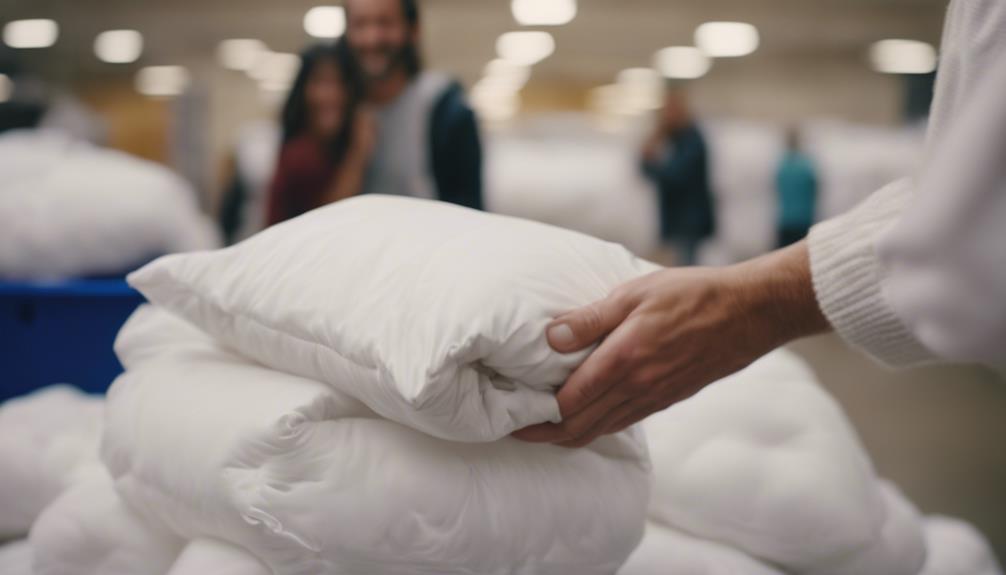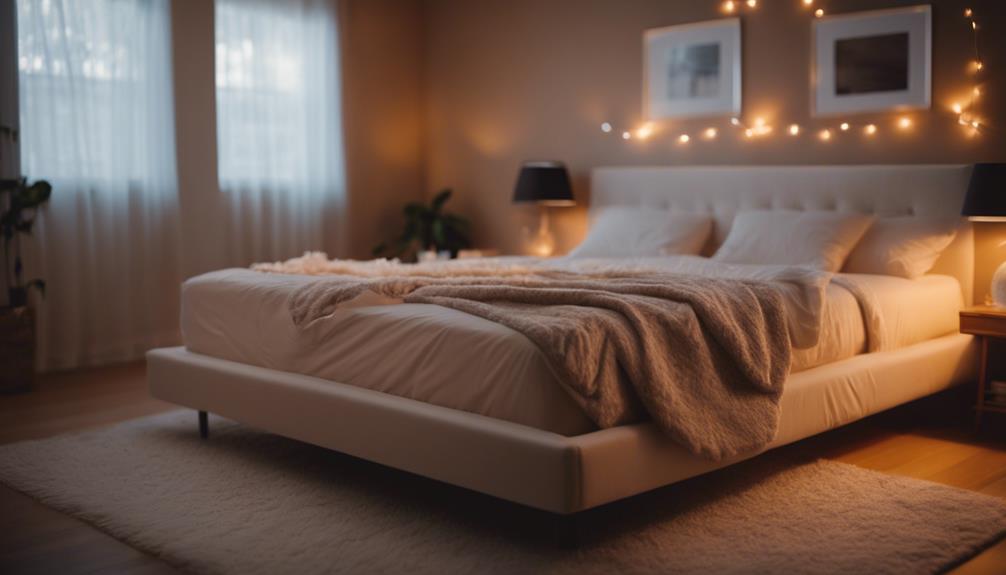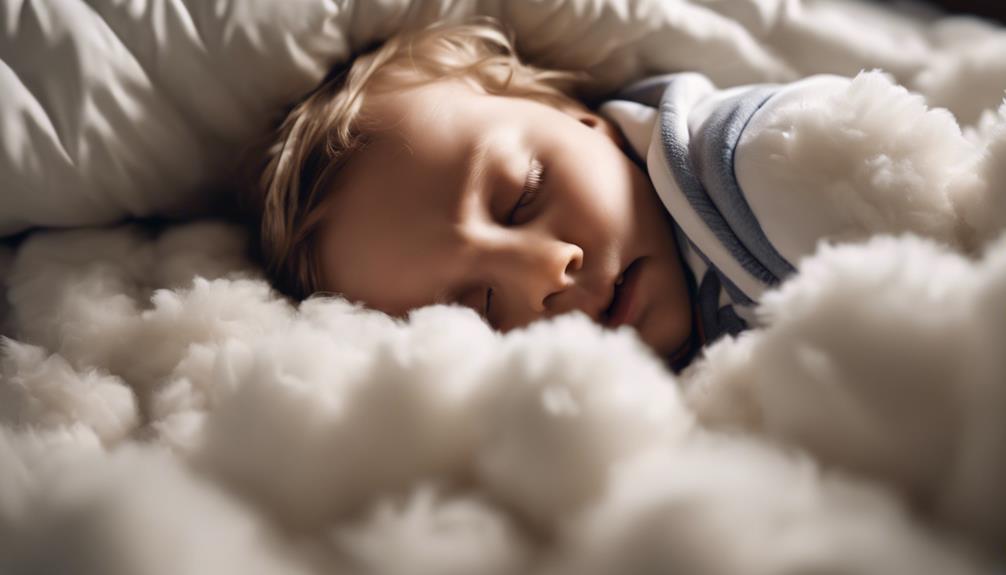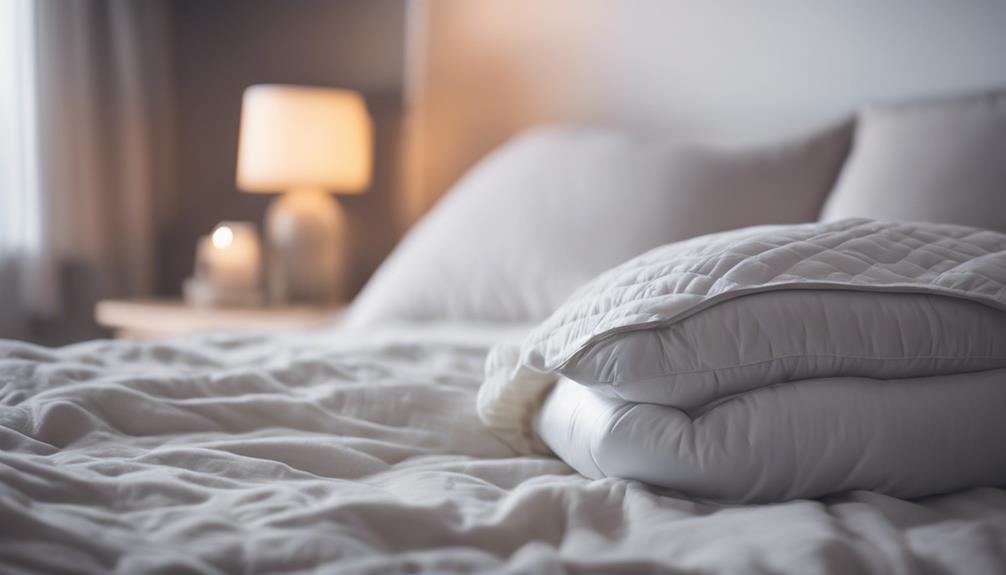Yes, you have the ability to donate down comforters! Donating down comforters not only provides warmth to those in need, but it also supports homeless shelters and charitable organizations. Additionally, it promotes sustainable practices and helps reduce waste in landfills. Large charitable organizations such as Salvation Army and Goodwill accept down comforters, but be sure to check for cleanliness, tears, and odors before donating. It’s important to ensure the comforters are bed bug-free and have been washed. Contact local charities for specific donation guidelines. By donating down comforters, you are making a positive impact on society and the environment. It’s important to consider the benefits, guidelines, and tax implications of your donation. More details on these aspects are valuable to bear in mind.
Key Takeaways
- Check with nationwide charities like Salvation Army or Goodwill for down comforter donations.
- Ensure comforters are clean, free of tears, odors, and bed bugs before donating.
- Contact local charities, thrift stores, or animal shelters for specific donation requirements.
- Prepare comforters by washing, deodorizing, and neatly packaging for donation.
- Research local donation centers through social media, community centers, or recommendations.
Where to Donate Down Comforters
When seeking places to donate down comforters, consider nationwide charities like the Salvation Army or Goodwill, which generally accept these items for donation purposes. The Salvation Army is a well-known organization that welcomes donations of old comforters to help those in need. By donating to the Salvation Army, you can guarantee that your old comforter will go towards assisting individuals facing hardships. Additionally, Goodwill is another great option for donating old comforters, as they accept these items along with bed linens to support their charitable work.
Donating to the Salvation Army not only helps those in need but also allows you to declutter your home and give a new purpose to your old comforters. It's essential to remember that these organizations may have specific guidelines for donations, so it's a good idea to check with them beforehand to confirm your comforter meets their requirements. By donating to the Salvation Army, you're making a positive impact on the community and contributing to a worthy cause.
Benefits of Donating Down Comforters

Donating down comforters has a positive environmental impact by reducing waste and promoting sustainability. Additionally, it directly helps individuals in need, especially during harsh weather conditions.
The act of donating old down products can make a significant difference in both the environment and society as a whole.
Environmental Impact of Donations
By repurposing old comforters through donation, we actively support sustainable consumption and reduce waste in landfills. Donating down comforters promotes a circular economy by extending the lifespan of these items. This practice helps reduce the need for new bedding materials, decreasing the environmental impact of production. Additionally, when down comforters are donated instead of being thrown away, they avoid contributing to the growing waste in landfills. By choosing to donate these items, individuals can play a part in sustainable practices and responsible consumption. This not only benefits the environment but also supports recycling centers that can process these donations for redistribution or repurposing. Below is a table illustrating the environmental benefits of donating down comforters:
| Environmental Benefits of Donating Down Comforters | |
|---|---|
| Reduces waste in landfills | Supports sustainable consumption |
| Promotes circular economy | Decreases resource consumption |
Helping Those in Need
Supporting those in need with warmth and comfort, donated down comforters can make a significant difference during harsh weather conditions. By donating a comforter to homeless shelters or orphanages, you can help individuals facing economic hardships stay warm and cozy.
Animal shelters also benefit from these donations as they provide comfort to animals waiting for their forever homes. Recycling down comforters through donation not only supports those in need but also promotes sustainable practices in the community. Giving away old down bedding items can have a positive impact on both the environment and society.
Choosing reputable organizations for donating down comforters guarantees proper distribution to those who can benefit the most. Make a difference today by donating a comforter to those in need.
Guidelines for Donating Down Comforters
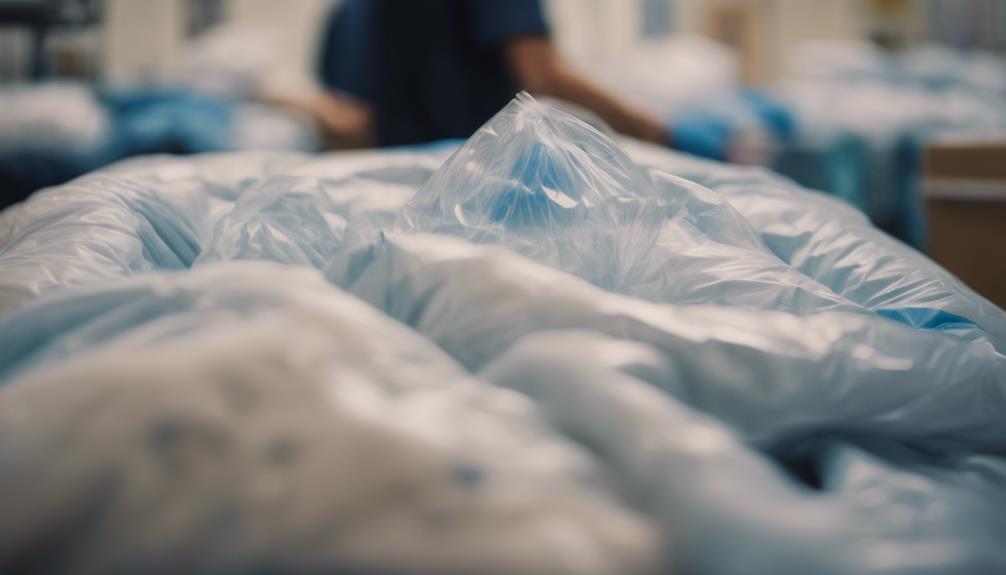
When donating down comforters, it's crucial to make sure they're clean and free of bed bugs. This step helps ensure that the comforters can be used by those in need.
We'll also cover the process overview and acceptable locations for donations in the upcoming sections.
Condition Requirements for Donations
To donate down comforters successfully, make sure they meet the cleanliness, good condition, and bed bug-free requirements.
- Check for Tears or Rips: Confirm there are no significant damages to the comforter.
- Inspect the Stitching: Verify the stitching is intact to prevent down from escaping.
- Smell Check: Confirm there are no unpleasant odors present on the comforter.
- Verify Cleanliness: Wash the comforter thoroughly to remove any stains or dirt.
Donation Process Overview
For donating down comforters, it's important to follow specific guidelines to guarantee a smooth donation process. Before making a donation, make sure the comforter is clean and free of bed bugs to meet donation requirements.
Contact local charities or thrift stores like the Salvation Army or Goodwill to inquire about their specific guidelines for down comforter donations. Additionally, some local Society for the Prevention of Cruelty to Animals may have a donation wishlist that includes bedding items.
Donating down comforters can greatly benefit those in need by providing warmth during harsh weather conditions. By following the proper donation procedures, you can help make a difference in the lives of individuals who require extra comfort and warmth.
Acceptable Donation Locations
Considering the impact of your donation, selecting appropriate locations is essential. When deciding where to donate your old or new down comforters, keep these in mind:
- National charities like the Salvation Army accept down comforters for those in need.
- Goodwill typically welcomes down comforters, but guidelines may vary by location.
- Local shelters and community centers often appreciate down comforter donations to support individuals facing hardships.
- While animal shelters may not accept down comforters due to cleaning challenges, it's best to check with specific organizations.
Ensure your down comforters are clean and in good condition before donating to maximize their impact on those in need.
Organizations Accepting Down Comforter Donations
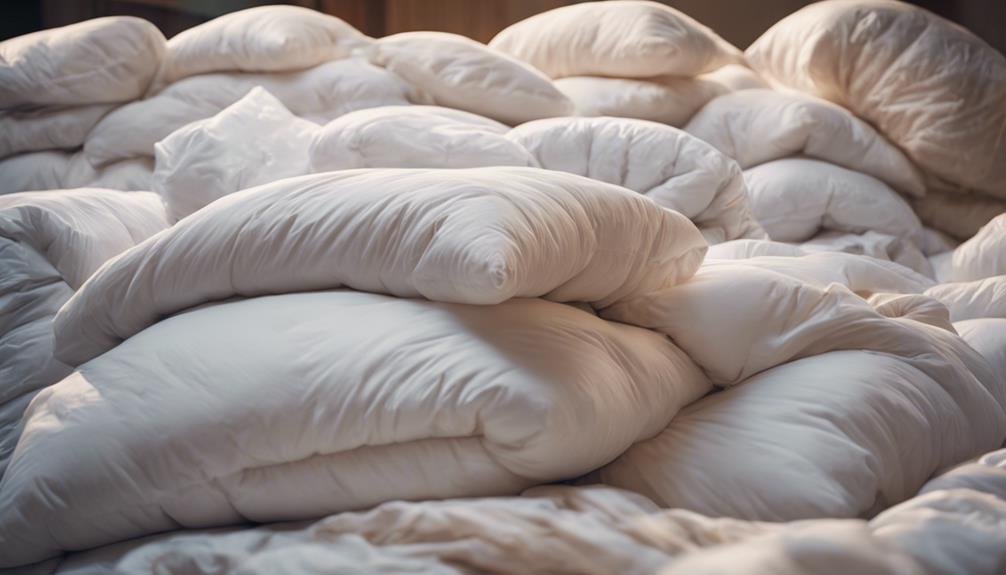
When looking to donate down comforters, various organizations like the Salvation Army and Goodwill are commonly known to accept such items. These organizations play an important role in supporting those in need by redistributing donated items to communities. Other options for donating down comforters include local shelters, churches, or even animal shelters like the Society for the Prevention of Cruelty to Animals (SPCA), which may use them for bedding purposes.
Here is a table summarizing some organizations accepting down comforter donations:
| Organization | Accepts Down Comforters? | Contact Information |
|---|---|---|
| Salvation Army | Yes | www.salvationarmy.org |
| Goodwill | Yes | www.goodwill.org |
| Local Shelters | Varies | Contact local shelters |
Before donating, ensure the down comforter is in good condition, clean, and free of any pests. By reaching out to these organizations, you can make a positive impact by providing warmth and comfort to those in need.
Process of Donating Down Comforters
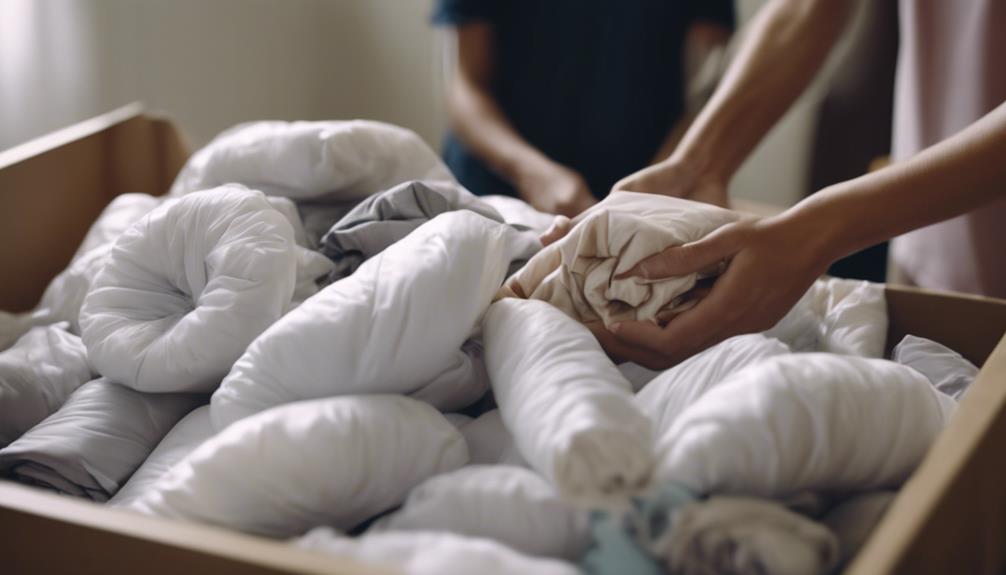
To donate down comforters effectively, we can start by reaching out to local organizations or charities to understand their donation process. When donating down comforters, follow these steps for a smooth process:
- Clean the Comforter: Make sure the comforter is washed and free of bed bugs for hygiene reasons.
- Check Guidelines: Reach out to local centers for specific instructions on donating down comforters.
- Review Wishlist: Consult with local Society for the Prevention of Cruelty to Animals for donation wishlist items, excluding sleeping pillows.
- Support Sustainability: Donating down comforters promotes sustainability by giving old bedding a new purpose and reducing waste.
Following these steps not only helps those in need but also contributes to a more sustainable future. By repurposing old bedding, we can make a positive impact on both individuals and the environment.
Impact of Donating Down Comforters

Donating down comforters positively impacts both individuals in need and the environment by providing warmth, comfort, and promoting sustainability. When we donate down comforters, we aren't only helping those less fortunate stay warm during cold weather but also reducing waste in landfills. Repurposing old down comforters extends their usage cycle, contributing to environmental sustainability. By giving away these comforters, we support local charities and organizations that serve vulnerable populations, spreading generosity and community support.
The impact of donating down comforters goes beyond just providing physical warmth. It reflects a compassionate attitude towards those in need and shows a commitment to reducing our environmental footprint. Each comforter donated can make a significant difference in someone's life, offering not just physical comfort but also emotional support during challenging times. Hence, the act of donating down comforters is a simple yet powerful way to make a positive impact on both individuals and the environment.
Tips for Preparing Down Comforters for Donation
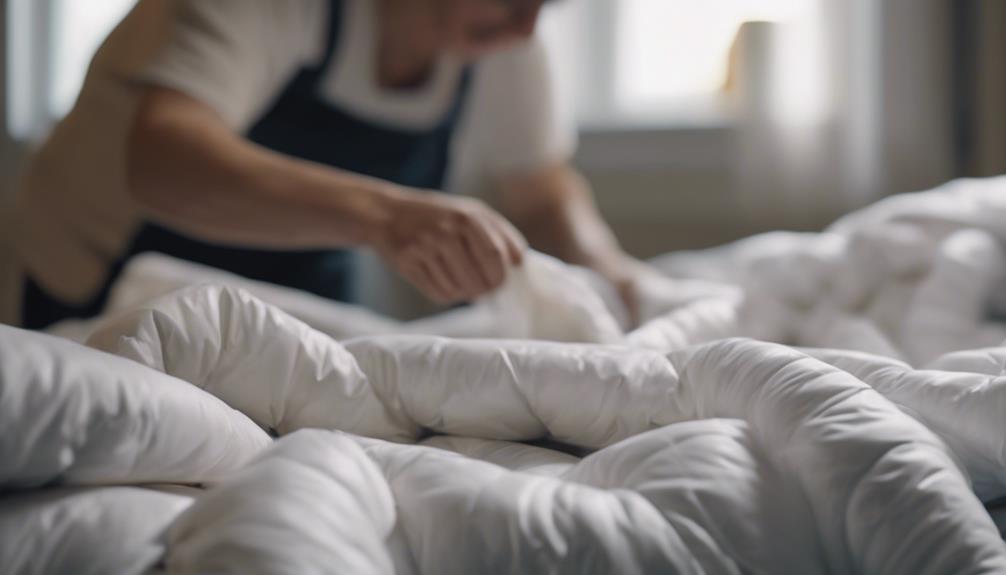
Before donating down comforters, it's important to make sure they're washed, deodorized, and free of any tears or damages that may compromise their usability. Here are some tips for preparing down comforters for donation:
- Wash and deodorize the comforter to guarantee cleanliness.
- Check for tears or damages that could affect its usability.
- Neatly fold the comforter and place it in a clean, sealed bag.
- Research local donation centers or charities that accept down comforters.
Tax Implications of Donating Down Comforters

Donors should be aware of the potential tax benefits associated with donating down comforters to eligible charitable organizations. When donating a down comforter, it may qualify for a tax deduction, but the value of the comforter will determine the amount you can claim.
It's important to keep detailed records of the donation, including the comforter's condition and its fair market value. To guarantee compliance with tax laws, consider consulting with a tax professional or referring to the IRS guidelines regarding donations.
Proper documentation and adherence to tax regulations are essential when claiming deductions for donated down comforters. By understanding the tax implications of donating, you can maximize the benefits of your charitable contributions while supporting those in need.
Remember that each donation can make a difference and potentially provide you with some tax relief.
How to Find Local Donation Centers
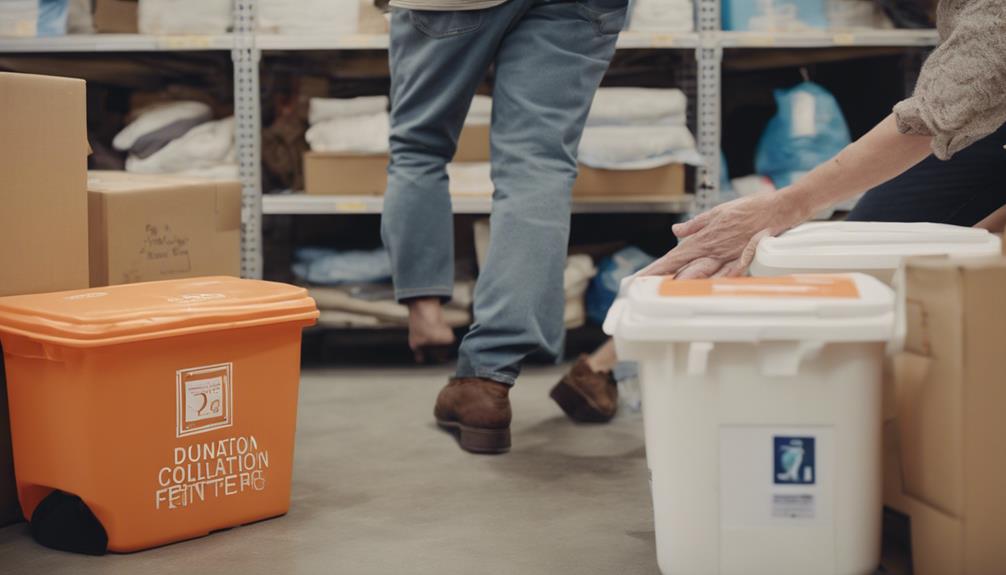
Searching online for local donation centers that accept down comforters is a convenient way to find places to donate. When looking to donate, consider these options:
- Check with well-known charities like Goodwill, Salvation Army, or local shelters for donation centers.
- Contact local animal shelters or rescue organizations to inquire about accepting down comforters.
- Explore donation opportunities at churches, community centers, or schools hosting drives for down comforters.
- Utilize social media platforms or community forums for recommendations on where to donate down comforters.
These avenues provide various options for donating down comforters to those in need. By reaching out to donation centers and local shelters, you can make sure that your down comforters find new homes where they can be of use.
Be proactive in your search to make a positive impact in your community.
Frequently Asked Questions
How to Get Rid of Old Down Comforter?
To get rid of an old down comforter, consider donating it to local charities or organizations in need. Make sure the comforter is clean and in good condition before donating.
What to Do With Old Down Duvets?
When it comes to old down duvets, there are various eco-friendly options worth exploring. You can donate them to local shelters or secondhand markets, supporting both sustainability efforts and those in need.
Another idea is to repurpose them into new items like pillows or cushions. Before donating, make sure to wash and deodorize the duvets for cleanliness.
Can I Donate a Duvet to Charity?
Yes, we can donate a duvet to charity. Many organizations like the Salvation Army and Goodwill accept duvets as donations. Donating helps those in need, especially during colder times.
Make sure the duvet is clean and in good shape before donating. Contact local charities or shelters for specific guidelines.
Donating a duvet is a great way to provide warmth and comfort to others.
When to Throw Out a Down Comforter?
When to throw out a down comforter? Signs like clumped feathers, moldy smell, or loss of fluffiness mean it's time. Manufacturers suggest replacing every 6-7 years. Watch out for yellow/brown streaks or a heavy, rough feel.
Proper disposal is key to reducing environmental impact. Consider donating if still usable. Make sure it's in good condition before passing it on. Time to say goodbye to that old comforter!
Is Donating Down Comforters a Better Option Than Recycling Them?
When it comes to down comforters recycling options, donating can be a better choice. Donating down comforters allows them to be reused by someone in need, extending their lifespan. Recycling can be an option if the comforter is no longer usable, but donating should be considered first.
Conclusion
To wrap up, donating down comforters can make a real difference in the lives of those in need. By giving to organizations that accept these donations, you can provide warmth and comfort to individuals facing difficult circumstances.
Remember, a small act of kindness like donating a down comforter can have a big impact on someone's life. So, consider donating today and make a positive change in the world around you.
